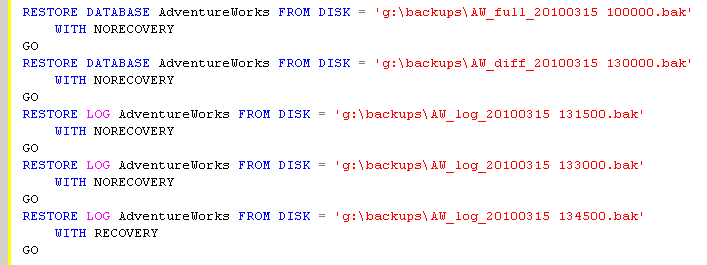
# available only in SQL Backup 6.4 and newer
Let''s say for a given database, you have a set of full backup
files, another set of differential backup files, and finally a set
of transaction log backup files. You now want to restore a
new database using those backup files, perhaps for reporting or
data extraction purposes. You will then need to identify the
latest full database backup file, followed by the latest
differential backup file, and finally the set of transaction log
backup files. Your restore set of commands could look like
this:

Using SQL Backup, you just use the
LATEST_ALL option to restore a database to its latest possible
state given the available backup files e.g.

Now, if you were restoring the database on the original SQL
Server instance itself, you don't even need to provide the
directories where the backups are stored. You can use the
information from the backup history tables itself e.g.

If restoring using information from the backup history tables,
you can even restore to a different database name e.g.


Document history
| 7/1/2010 | Initial release. |


